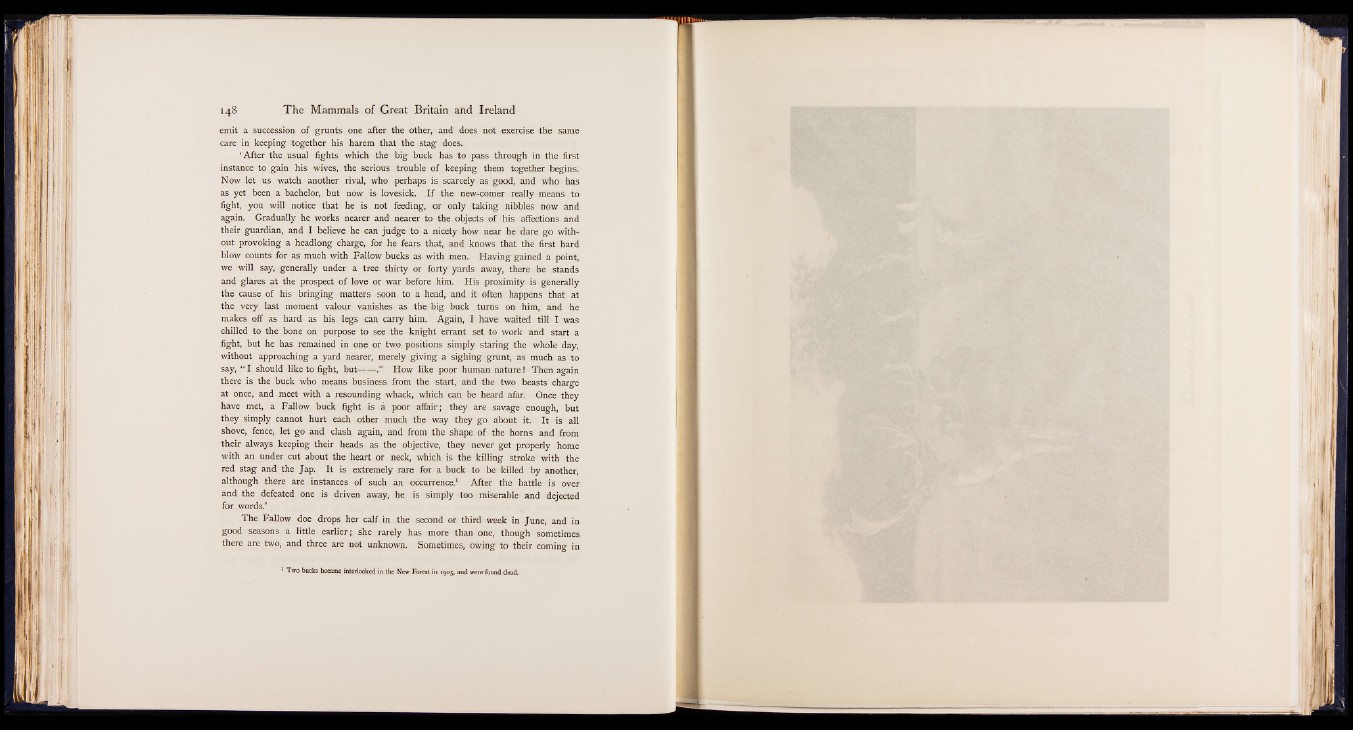
emit a succession of grunts one after the other, and does not exercise the same
care in keeping together his harem that the stag does.
‘ After the usual fights which the big buck has to pass through in the first
instance to gain his wives, the serious trouble of keeping them together begins.
Now let us watch another rival, who perhaps is scarcely as good, and who has
as yet been a bachelor, but now is lovesick. I f the new-comer really means to
fight, you will notice that he is not feeding, or only taking nibbles now and
again. Gradually he works nearer and nearer to the objects of his affections and
their guardian, and I believe he can judge to a nicety how near he dare go without
provoking a headlong charge, for he fears that, and knows that the first hard
blow counts for as much with Fallow bucks as with men. Having gained a point,
we will say, generally under a tree thirty or forty yards away, there he stands
and glares at the prospect of love or war before him. His proximity is generally
the cause of his bringing matters soon to a head, and it often happens that at
the very last moment valour vanishes as the big buck turns on him, and he
makes off as hard as his legs can carry him. Again, I have waited till I was
chilled to the bone on purpose to see the knight errant set to work and start a
fight, but he has remained in one or two positions simply staring the whole day,
without approaching a yard nearer, merely giving a sighing grunt, as much as to
say, “ I should like to fight, but— — .” How like poor human nature! Then again
there is the buck who means business from the start, and the two beasts charge
at once, and meet with a resounding whack, which can be heard afar. Once they
have met, a Fallow buck fight is a poor affair; they are savage enough, but
they simply cannot hurt each other much the way they go about it. It is all
shove, fence, let go and clash again, and from the shape of the horns and from
their always keeping their heads as the objective, they never get properly home
with an under cut about the heart or neck, which is the killing stroke with the
red stag and the Jap. It is extremely rare for a buck to be killed by another,
although there are instances of such an occurrence.1 After the battle is over
and the defeated one is driven away, he is simply too miserable and dejected
for words.'
The Fallow doe drops her calf in the second or third week in June, and in
good seasons a little earlier; she rarely has more than one, though sometimes
there are two, and three are not unknown. Sometimes, owing to their coming in
1 Two bucks became interlocked in the New Forest in 1905, and were found dead.